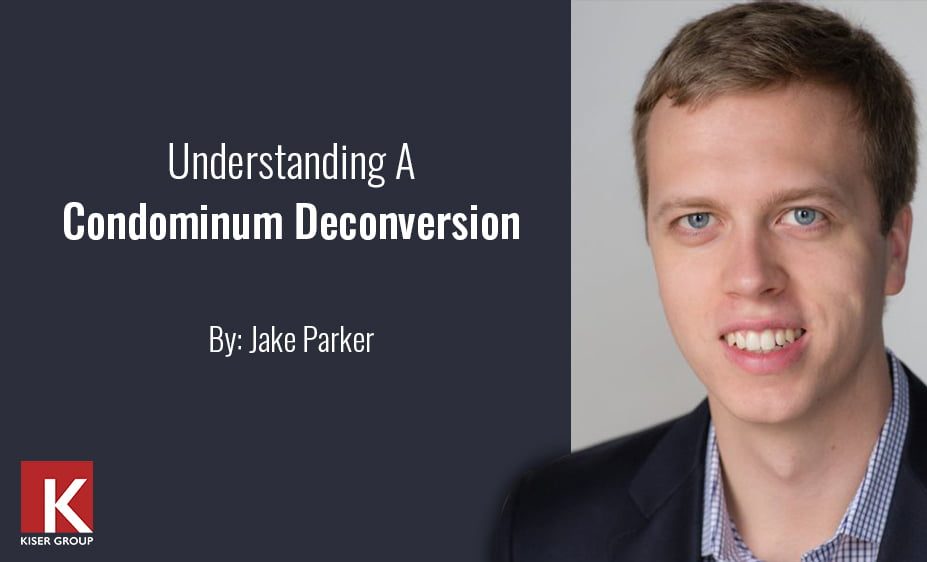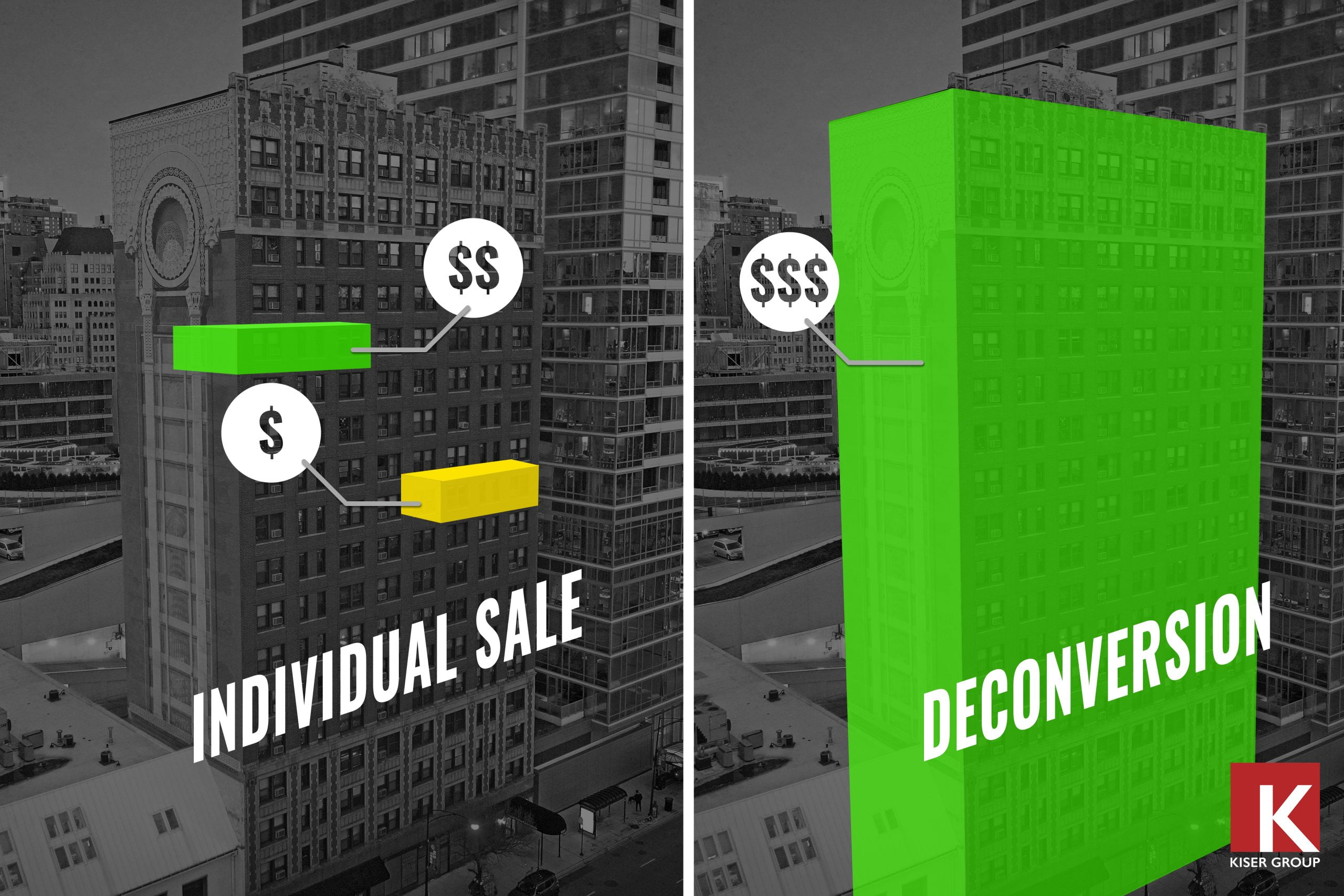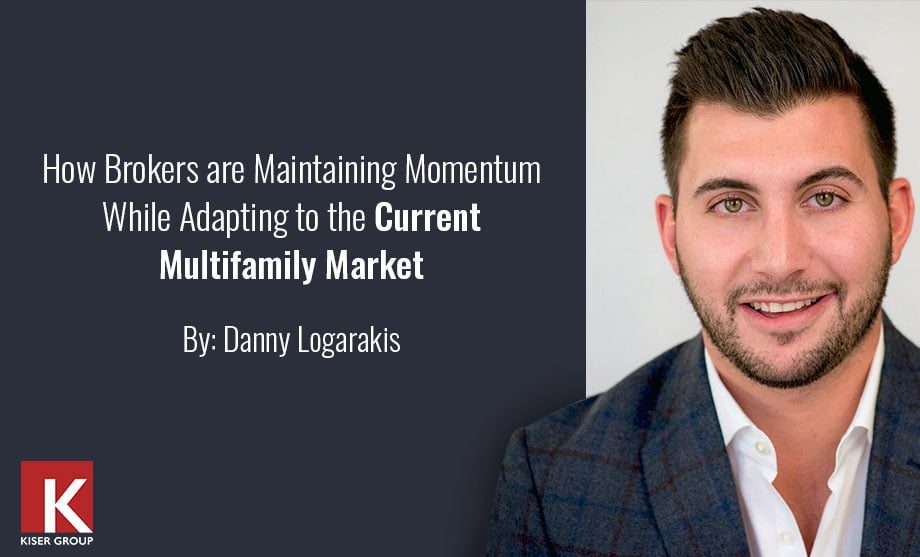03.28.23
Understanding a Condominium Deconversion

Q&A with Kiser Group Director Jake Parker, a Specialist in Condo Deconversions.
Condominium deconversions have gained popularity over the years, with many associations and investors considering it as a new chapter or investment opportunity. However, just like any other listing, it comes with its own set of challenges. “I think a lot of it is problem-solving,” said Jake Parker, a specialist in condo deconversions. “It’s not only about identifying a problem before it becomes one, but also about finding a resolution to any new issues that arise. That’s a major aspect of deconversions – identifying potential problems before they materialize or addressing them when they do.”
If you’re new to the concept of deconversion and want to learn more about it, keep reading to find out the basics of this process and how it differs from a typical listing with director Jake Parker, a specialist in condominium deconversion.
Kiser Group: What is a condo deconversion?
Parker: A deconversion is where one person, an investor, buys an entire building and turns it into rental apartments. The building may have previously had multiple individual owners, but now it is owned by a single investor who has transformed it into rental units. Essentially, it is a bulk sale of the property.
Kiser Group: How does the deconversion process work?
Parker: There are two ways for an investor to inquire about a building: they can reach out to the Home Owner’s Association (HOA) and the HOA can then decide whether or not to entertain the offer, or the HOA can pursue a brokerage to market the property to potential investors. These are the two options that can initiate the process.
Next, the HOA must take a vote in order for the sale to go through. In Illinois, 75 percent of the owners must agree to sell, according to Section 15 of the Illinois Condominium Property Act, 765 ILCS 605/15 (the Act). Once the HOA decides to move forward, it will be up to potential investors to submit offers. The deconversion process adds several steps prior to a property being listed and offers coming in, making it unique compared to other typical listings.
Kiser Group: How does the condo deconversion evaluation process work?
Parker: We consider the property’s applicable expenses, such as utilities, market rents in the area, and management expenses. Then, we subtract all of these to determine how much the building could produce as an apartment building. We verify this by examining different parameters in the valuation, such as cap rate, GRM, and price per unit. We also evaluate the property based on its current condition and potential for renovation. We value it based on what we think the market will deliver, but ultimately the true value is determined through the marketing process and by getting numerous investors and buyers interested through presenting an offer. We may estimate that a building is worth $20 million, but if everyone comes through and offers $18 million, then it is worth $18 million. We do our best to gauge where the market is going.

Kiser Group: Why might a buyer and seller consider a condo deconversion?
Parker: From a buyer’s perspective, they target these buildings because there is a high demand for apartments. They can earn a higher profit from the building, and the premium they pay is higher than the unit’s worth as a condo. Similarly, for the seller, the condo owner, they can earn more money than they would by selling their condo individually. They can also try to avoid special assessments that are coming due. These are the two main reasons why people pursue deconversions.
Kiser Group: What are the challenges for buyers and sellers?
Parker: For buyers, the difficulty lies in pursuing a building they want to purchase without knowing if they meet the threshold until they present an offer and contract. Our job is to identify upfront whether the sellers are interested in selling and if it makes sense for the buyers. However, confirmation of an accepted offer may not come until later in the process, which can be challenging.
As for sellers, some may not want to sell for various reasons, making it difficult to please everyone in a larger building. Another challenge is the misconception that they have to move out immediately. However, almost every offer includes the option to lease back the unit upon closing, providing flexibility on when to move out. Additionally, some sellers may think they’re not receiving enough money for their unit, but in reality, they’re getting above-market prices. Under Section 15 of the Illinois Condominium Property Act, people can object to the price if they were not in favor of the deconversion and hire their own appraisal team to ensure they are receiving the best price for their unit. Legal procedures can help address this challenge.
Kiser Group: What are deconversions like in this current market?
Parker: I believe deconversions have become more common due to increasing capital improvement needs in buildings, as well as rising interest rates. Recently, as interest rates have gone up, many of these buildings are becoming weary of dealing with day-to-day challenges, which has created a lot of activity for us.
If you have questions, or are interested in getting more information about condominium deconversions feel free to reach out to Jake Parker and Andy Friedman. You can learn more about condo deconversions with Kiser Groups condo deconversion playbook.
